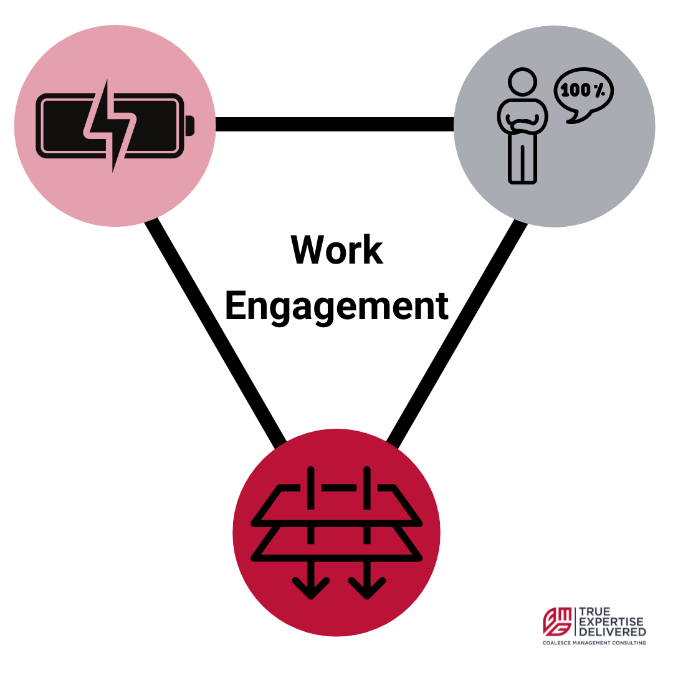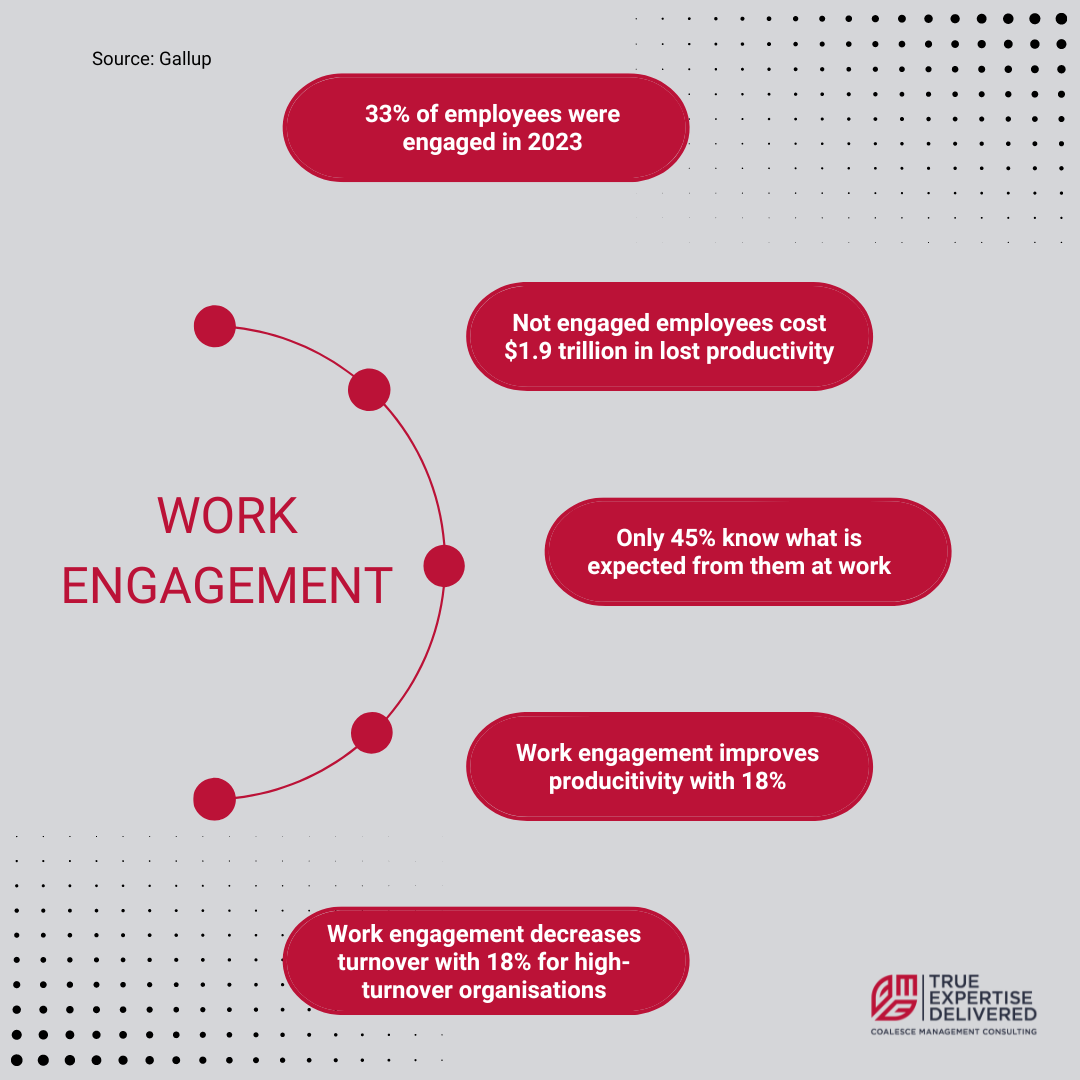An engaged employee leads to a happy client! Engagement is the key to success for your business, but only 23% of employees worldwide are truly engaged. Employee engagement measurement allows managers to evaluate productivity, work culture, and collaboration. By measuring engagement, you can determine if your employees are effectively working or merely passing the time. Additionally, it helps employers identify which teams work well together and whether restructuring is needed to optimise activities. Employee engagement is more than a sporadic survey or a one-to-one conversation. It’s a well-planned strategy to ensure that employees are happy with their work, motivated and productive.
Unfortunately, most managers don’t know how to measure or improve employee engagement to ensure a positive work culture. They lack the right tools and knowledge to motivate employees. Yearly surveys or a good paycheck aren’t enough to reduce turnover and boost productivity. Employees need encouragement, satisfaction, and a sense of purpose in their work. But how do you achieve that?
In this article, you will gain insights into employee engagement, supported by research and statistics, and learn about CMC’s engagement rate process of our consultants.
What Is Employee Engagement?
A definition of employee engagement is: “how much an employee is committed to helping their organisation achieve its goals”. However, this definition is quite vague for measuring employee engagement. Therefore, it’s crucial to understand the key components of employee engagement: vigour, dedication, and absorption.

Vigour refers to high levels of energy and mental resilience while working. Are employees bursting with energy during work hours, or do they watch the clock every five minutes? Dedication involves a strong involvement in one's work and experiencing a sense of significance, enthusiasm, and challenge. Do employees feel like their work contributes to the company and does their work satisfy them? Absorption is characterised by being fully concentrated and happily engrossed in one's work, often leading to a sense of losing track of time. Does time fly or does five minutes feel like five hours? Besides a definition and key components, there are three types of engagement. Engaged, not engaged and actively disengaged.
1.Engaged: The employee is very productive and feels satisfaction from doing their job. They put in the extra work to deliver the best service possible and are a great motivation for fellow colleagues.
2.Not engaged: The employee does not feel satisfied with their job and lacks purpose, motivation, and passion. They do their job and work the hours, but they are not committed to their tasks and will not put much energy or engagement into their work.
3.Actively disengaged: The employee is not only unsatisfied with their work but also expresses their disinterest and dissatisfaction to their colleagues, which can undermine engaged employees.
Why Are Engaged Teams More Productive?
Organisations that prioritise fostering work engagement often benefit from a more committed, innovative, and resilient workforce. Strategies to enhance work engagement include providing meaningful work, offering opportunities for professional development, recognising and rewarding contributions, ensuring effective leadership, and creating a supportive work environment. By focusing on these areas, companies can cultivate a culture where employees are motivated and engaged, ultimately driving organisational success. Gallup revealed some interesting statistics about employee engagement:

In the graphic above, several numbers illustrate how engaged teams benefit companies culturally, financially, and internally. Only 33% of employees in the U.S. were engaged in 2023, which raises the question of how employers can better engage their employees, as disengaged employees can cost up to $1.9 trillion in lost productivity.
One possible reason for low engagement is that only 45% of employees actually know what is expected of them at work. Employee engagement is also widely considered an 'HR thing,' which is a misunderstanding because managers are primarily responsible for the performance of their teams. Managers can motivate employees and redirect them when necessary. Other possible causes of low employee engagement include using incorrect metrics, complicated processes, or the overuse of surveys.
Despite the low engagement rates in the U.S., work engagement improves productivity by 18%. It also decreases turnover by 18% for high-turnover organisations. In low-turnover organisations that number can rise to 43%.
CMC Employee Engagement Measurement Process
CMC provides professional employee engagement measurement services for our placed consultants by assessing the performance and engagement of their work on your project. We have four phases in our process:
1.Preparation Phase: Two surveys are sent to the consultants and one to their direct managers two weeks in advance of our arrival. Both the direct manager and the consultants receive a performance review survey. Consultants also receive an additional survey regarding their work engagement. The results of these surveys will be processed and analysed before our arrival. The surveys sent to consultants cover four categories, which consultants can rate on a scale from one to five. The categories are technical expertise, communication skills, stakeholder management, cultural alignment/fit, and delivery.
2.Execution Phase: On-site, we conduct interviews with all consultants to discuss areas of concern and differences between their answers and those of their managers. Additionally, we ask consultants about their experiences and how they believe their work situation could be improved. Following this, we meet with Yuthika to discuss general findings. This concludes the on-site element of the review.
3.Analysis Phase: Afterward, CMC produces a report for each consultant and sends it to the managers, containing findings and recommendations. In addition, CMC creates a general report, which compiles all individual reviews as well as general findings.
4. Implementation Phase: Recommendations and findings from the report are discussed with the client and applied to all consultants. Finally, CMC develops an action plan based on the report and conclusions. CMC also assigns external coaches and creates a quarterly improvement plan if required.
How Engaged Is Your Team?
CMC is a specialist management consultancy with multiple years of experience in measuring and improving employee engagement of our consultants. We tailor our employee engagement measurement process to the needs of our partners to help them optimise their projects. Our goal is not only to measure employee engagement but also to improve it by implementing effective engagement and performance strategies.
If you want to know more about our consulting services or schedule a quick call, don’t hesitate to contact our international teams.


